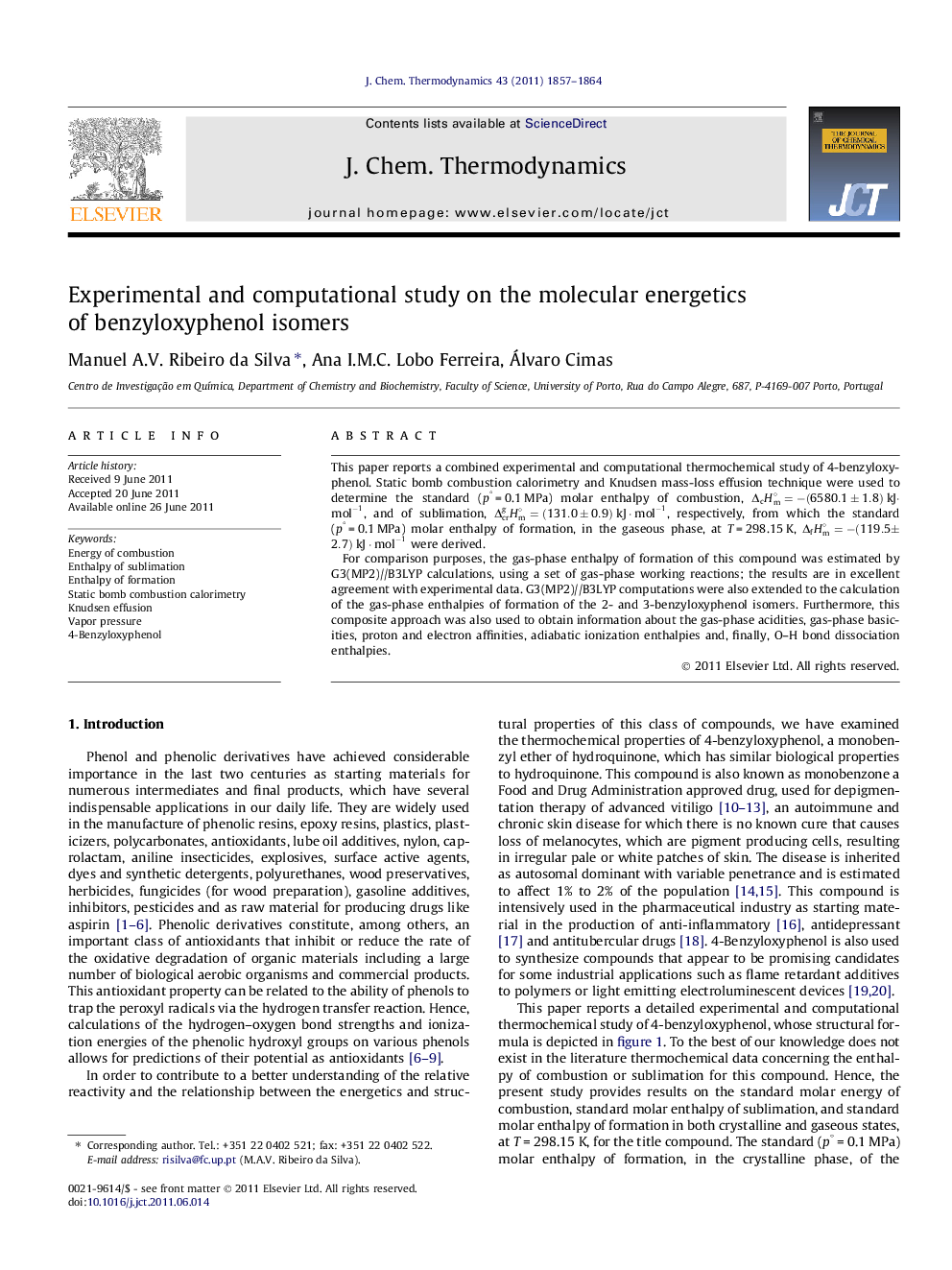| Article ID | Journal | Published Year | Pages | File Type |
|---|---|---|---|---|
| 216397 | The Journal of Chemical Thermodynamics | 2011 | 8 Pages |
This paper reports a combined experimental and computational thermochemical study of 4-benzyloxyphenol. Static bomb combustion calorimetry and Knudsen mass-loss effusion technique were used to determine the standard (p° = 0.1 MPa) molar enthalpy of combustion, ΔcHm∘=-(6580.1±1.8)kJ·mol-1, and of sublimation, ΔcrgHm∘=(131.0±0.9)kJ·mol-1, respectively, from which the standard (p° = 0.1 MPa) molar enthalpy of formation, in the gaseous phase, at T = 298.15 K, ΔfHm∘=-(119.5±2.7)kJ·mol-1 were derived.For comparison purposes, the gas-phase enthalpy of formation of this compound was estimated by G3(MP2)//B3LYP calculations, using a set of gas-phase working reactions; the results are in excellent agreement with experimental data. G3(MP2)//B3LYP computations were also extended to the calculation of the gas-phase enthalpies of formation of the 2- and 3-benzyloxyphenol isomers. Furthermore, this composite approach was also used to obtain information about the gas-phase acidities, gas-phase basicities, proton and electron affinities, adiabatic ionization enthalpies and, finally, O–H bond dissociation enthalpies.
► Combustion calorimetry was used to determine ΔfHm∘(cr) of 4-benzyloxyphenol. ► Vapor pressures were determined by the Knudsen mass-loss effusion technique. ► Gas-phase ΔfHm∘ of benzyloxyphenol isomers have been derived.
